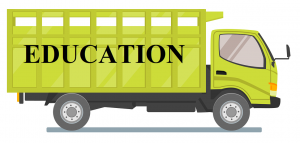Have you ever noticed how much teachers like to talk?

Its true, you get a group of teachers together, they will talk for hours. It doesn’t matter how simple the topic, teachers can TALK!

This became evident while reading through the summaries and watching the videos this week in class. Groups discussed the implications of integrating technology in the classroom, the challenges and barriers and of course the opportunities for learning. What I noticed there was not one answer that addressed all needs. I don’t think there will ever be a ‘one answer fits all’ situation in education, nor should there be. Education has too many variables to have one simple solution. However, it is amazing that most discussions to find answers tended to create more questions.

There is the pressure to include digital technologies into the classroom. This pressure is from administrators, other teachers and society’s expectations. But this pressure to integrate technology doesn’t always lead to the best results, as teachers may not have the skills to be able to include technology effectively. Moreover, technology (if not properly incorporated) can be a distraction from learning. In addition, educators can’t assume that students will know how to use technology. Therefore, teaching how to use technology can take away precious time from other learning. There is also a concern on the accuracy of assessment. Educators must decide if they are assessing the content or if they are assessing the students’ ability to use technology.
What I find most interesting about integrating technology in the classroom are the opportunities for multimedia, the discussions around using information technology for assessment, and the advancements in flexible learning programs.

Multimedia:
Multimedia learning has drastically changed in recent years, there are many options for presenting information. Multimedia at its core is combining words and pictures, to increase understanding. The most important thing to remember is that multimedia helps build mental representations of the information. Multimedia is used to support the learning process however; it can become a distraction. When multimedia is added without purpose it can detract from learning. Despite the pros and cons, multimedia learning continues to be a point of exploration and discussion in education.

Assessment:
Technology provides a unique opportunity to create individualized assessment, both formative and summative. On the plus side, technology provides educators a variety of feedback options and the ability to give quality feedback that promotes self-reflective practices. However, there are concerns with using technology to assess students around privacy and ethics. In addition, there are multiple challenges and barriers when using technology for assessment, including time and resources. The fact of the matter is, current assessment practices are not at pace with the technological advancements we are seeing in education. It will take some time to develop best practices involving assessment and technology.

Flexible Learning:
Distance, online, and blended learning environments are becoming more prominent in education. The flexibility of this type of learning can fit the needs of our changing society and the many diverse learners in the classroom. Flexible learning is at the crossroad of content, pedagogy, technology and the learner. But there are some challenges educators in this area face. First, the pedagogical practices used in face to face classrooms don’t always translate to an online learning environment. Second, there are specific skills and competencies needed to implement effective teaching strategies in a flexible learning environment. Despite the challenges, flexible learning environments provide a unique opportunity to integrate digital technology into education.

Flexible learning and curriculum challenges have the most implications for me as an educator. Working in a blended program, I have the unique opportunity to use technology daily in my teaching. However, that does not mean it is challenge free. I find assessment is a continuous struggle, and there is a lot of trial and error. It is hard to predict if an assessment tool will evaluate the students’ ability to use technology or their understanding of the content. If find that it is important to clearly identify the destination, before planning the journey. This is especially challenging when I must look further in the future than the following week’s lesson plan. (But let’s be real teachers, this is not always an option.) The big question is how to prepare students with skills and competencies that will allow them to be successful in the 21st century. This is a continuous battle between getting students and parents on board and having time or resources to plan and integrate the soft skills into the lesson.

I strongly believe in creating active learning opportunities for students. But honestly, sometimes my ideas just don’t work out. I’ll plan a game, thinking that it connects the ideas and content, just to find out that students have no idea what I am talking about. The same happens when I try to integrate new technology. Despite the many attempts and failures, technology provides an opportunity to create engaging activities and learning opportunities for students.
The big questions remain:
- How can educators integrate technology into the classroom?
- How can educators include active learning experiences to teach across subjects?
- How can educators increase student engagement using technology in the classroom?
- What challenges and barriers do educators face when integrating technology?

I don’t have an answer for these discussions yet, but as a teacher, I look forward to talking about these topics in education until the cows come home.






 Clark would argue that media has no influence on learning and will never have an impact on learning. Technology is merely a vehicle to deliver information to students. His primary argument is that media in education can be replaced, as it is chosen based on cost and effectiveness.
Clark would argue that media has no influence on learning and will never have an impact on learning. Technology is merely a vehicle to deliver information to students. His primary argument is that media in education can be replaced, as it is chosen based on cost and effectiveness. 












Recent Comments